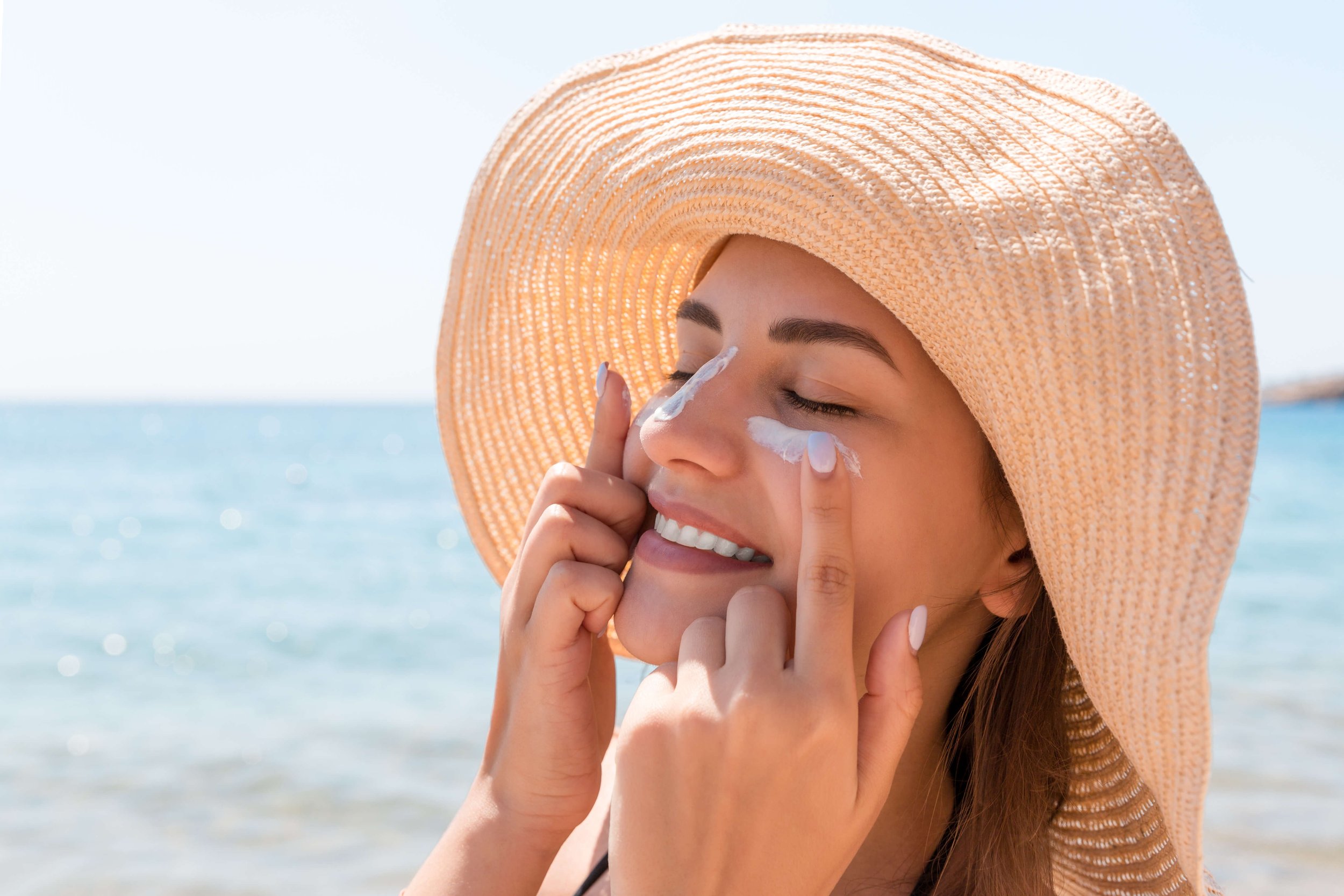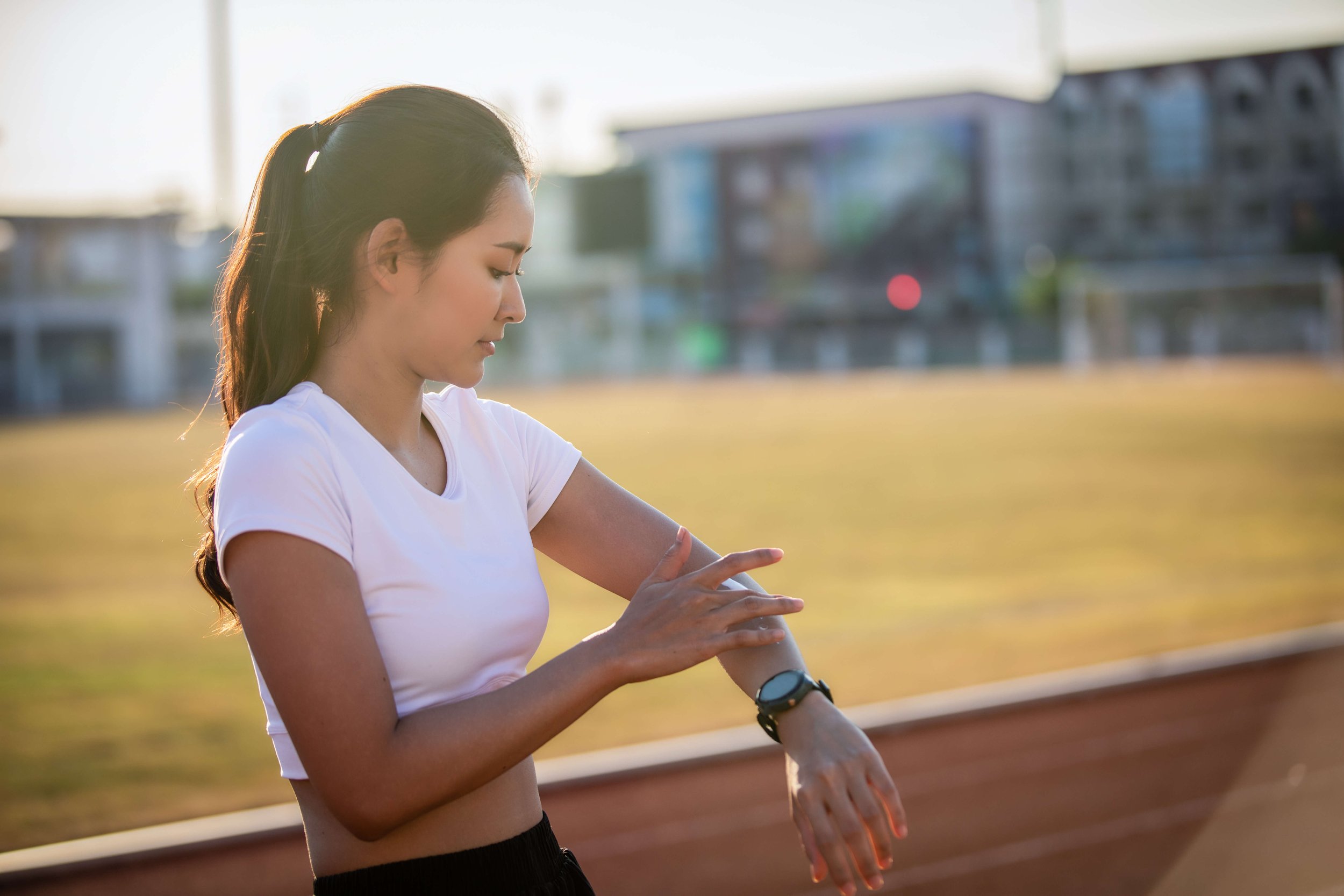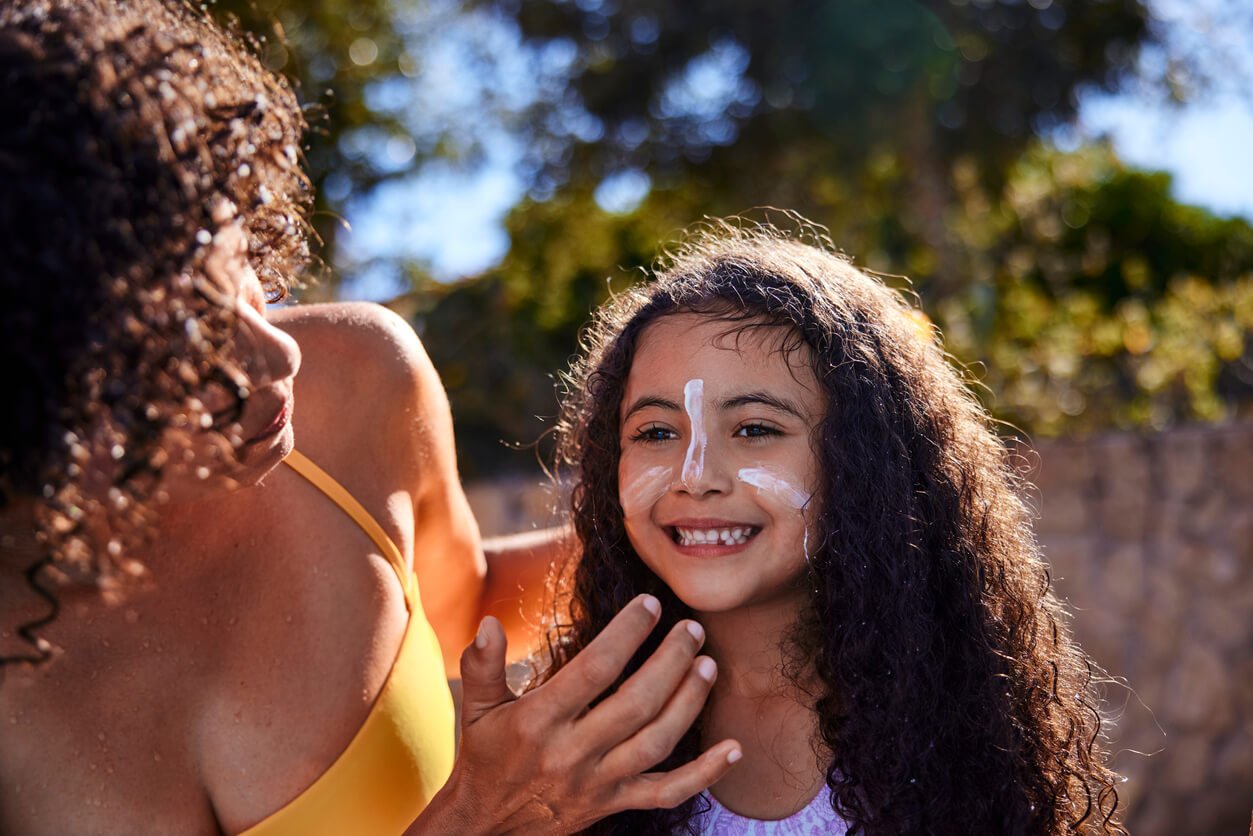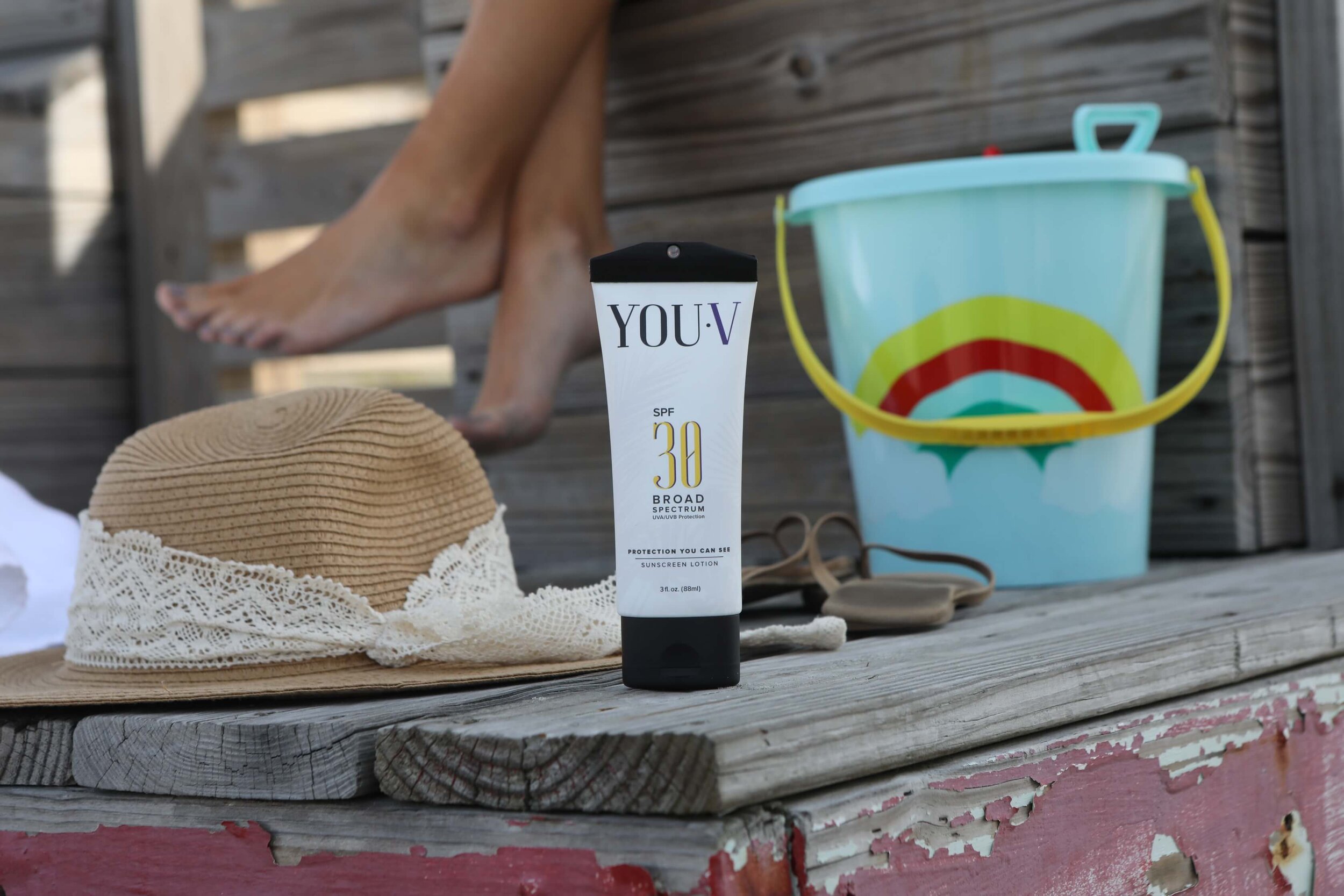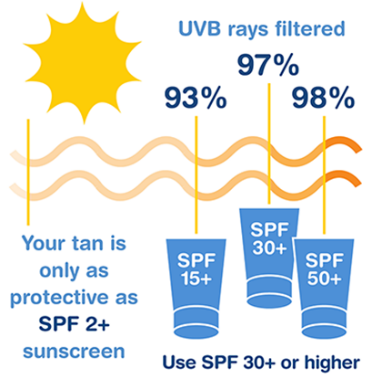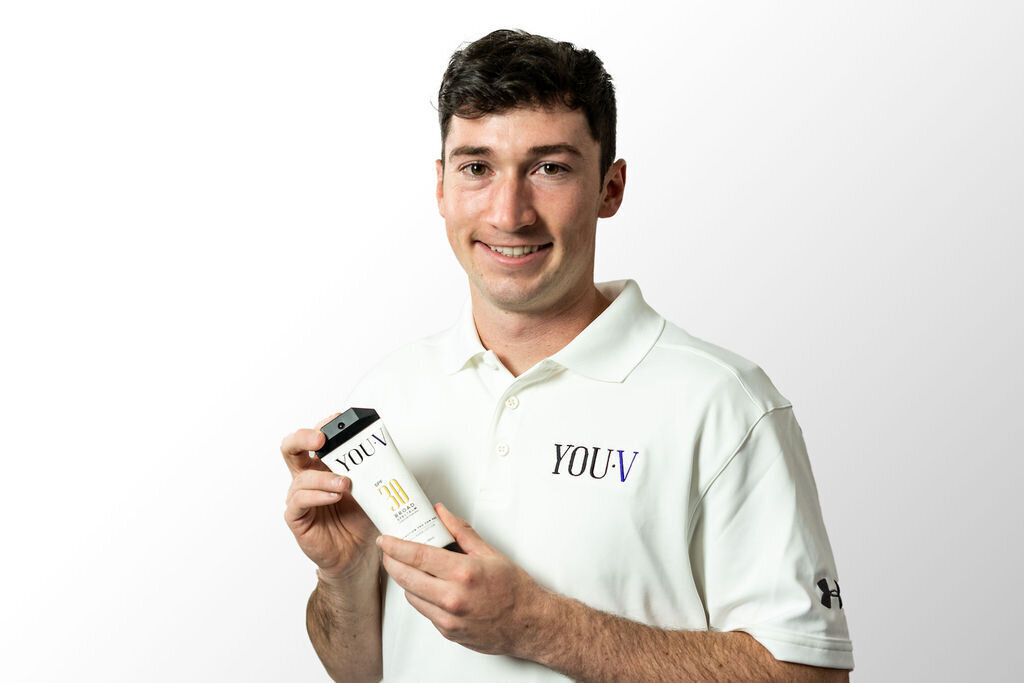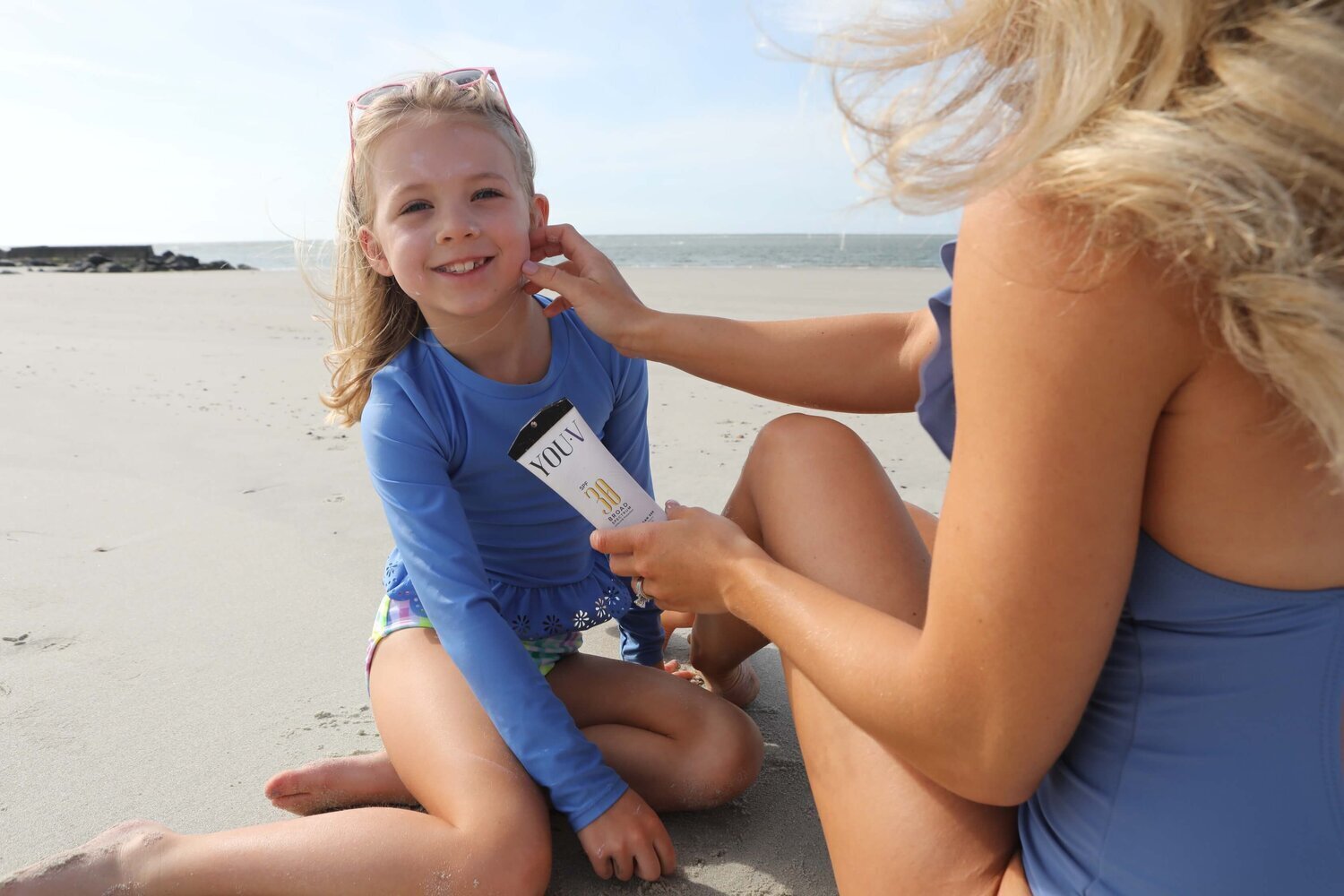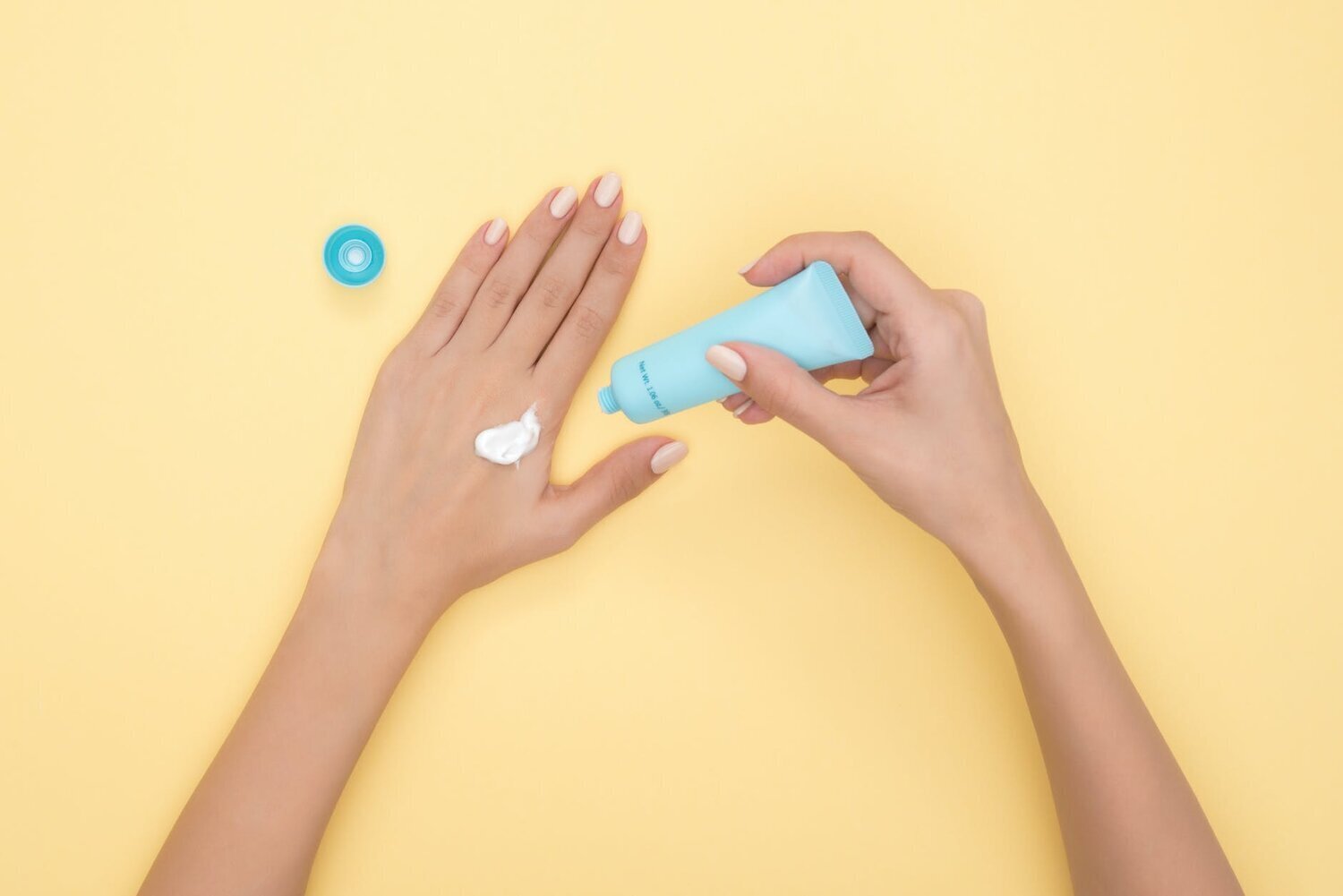How Does Sunscreen Work?
The sun can be a staple during our most loved outdoor activities, but its UV radiation can increase the risk of skin cancer and speed aging.
Sunscreen is your best shield against harmful UV rays and crucial to preserving lifelong healthy skin.
What are UV rays?
Ultraviolet (UV) radiation is a form of energy emitted by the sun. UV light has a shorter wavelength than visible light, so you can’t see it, but your skin can feel it.
UVA are longer in wavelength and associated with skin aging. UVB has a shorter wavelength and is associated with skin burning.
It is crucial that your sunscreen contain broad spectrum coverage against both UVA and UVB rays.
How does sunscreen work?
Sunscreen contains one or more active ingredients that block or absorb UV radiation. UV absorbers, or also known as chemical sunscreens convert UV radiation to heat and prevents deep skin penetration. Chemical absorbers mostly absorb UVB rays, but very few absorb UVA rays. UVA rays are known to penetrating deeper into the skin to cause immune and DNA damage.
UV reflectors or also known as physical sunscreens remain on top of your skin and reflect UV rays away from your body.
What is SPF?
Sunscreen active ingredients only allow a certain portion of UV rays to reach your skin. Sun protection factor (SPF) measures the level of protection a sunscreen provides. The higher the number, the less UV light reaches your skin. An SPF 30 sunscreen only allows 1/30 the amount of UV light, while an SPF 50 sunscreen only allows 1/50th of the UV light to pass through. Ideally, it would take someone 30 times longer to burn using SPF 30 sunscreen than not using sunscreen at all.
If unprotected, it could take as little as ten minutes to show skins of burning.
How should I use sunscreen?
You should apply sunscreen 20 minutes before sun exposure to ensure that the sunscreen is properly bonded to the skin or covers every crack. Apply a teaspoon of sunscreen to each limp, your face, back and front torso.
Apply every two hours to ensure reliable protection or more often if you are swimming, using a towel or sweating. Pay attention to the UV index (link) and utilize clothing, hats and sunglasses to protect yourself during peak sun hours.
We recommend using YouV sunscreen for complete and reliable sunscreen protection. Not only does YouV provide broad spectrum coverage, it also contains other beneficial ingredients (link) to keep your skin healthy and moisturized. YouV features a UV light to check your sunscreen coverage and need for reapplication. There is no better sunscreen to safeguard your precious skin in the sun.



